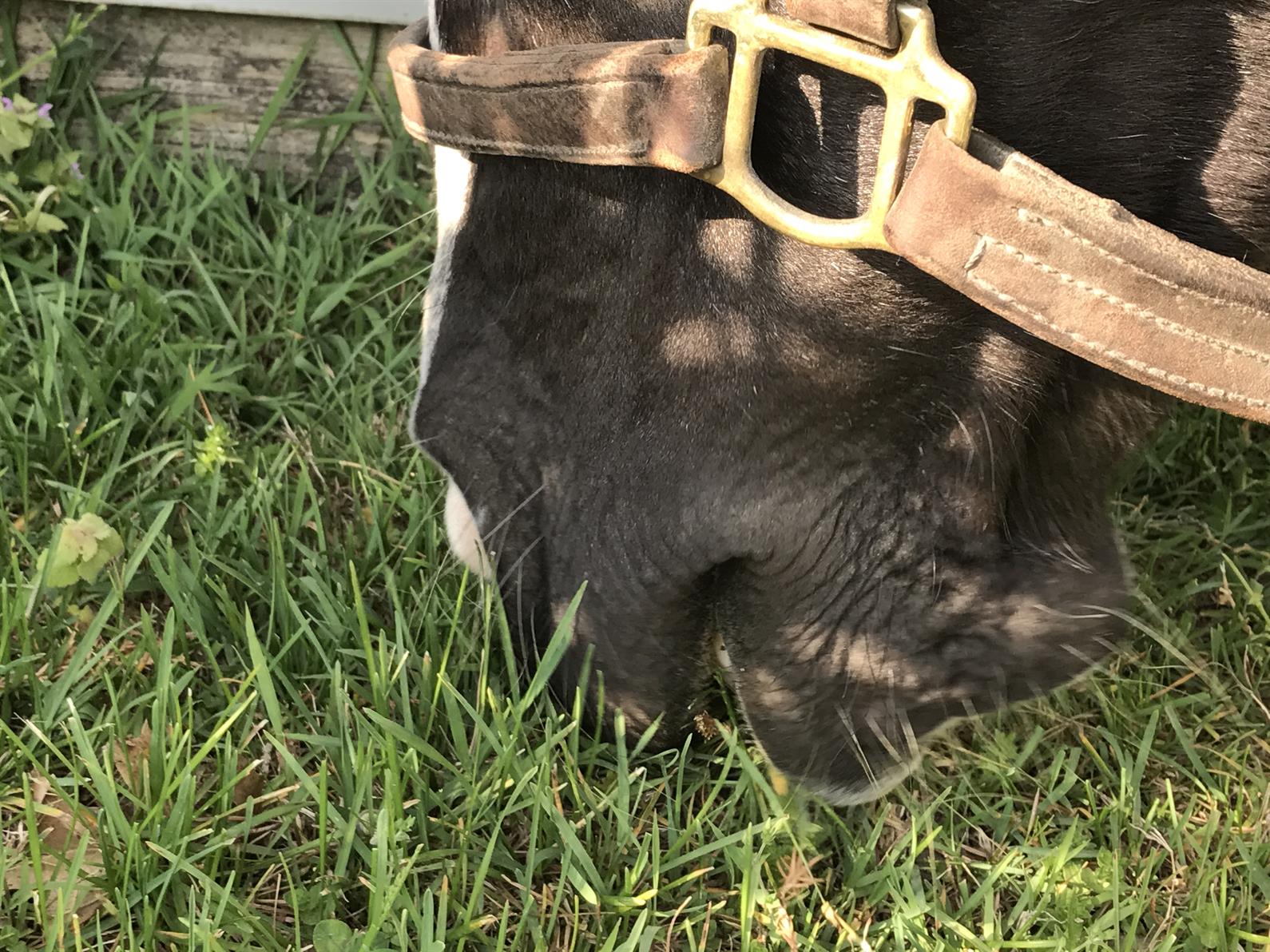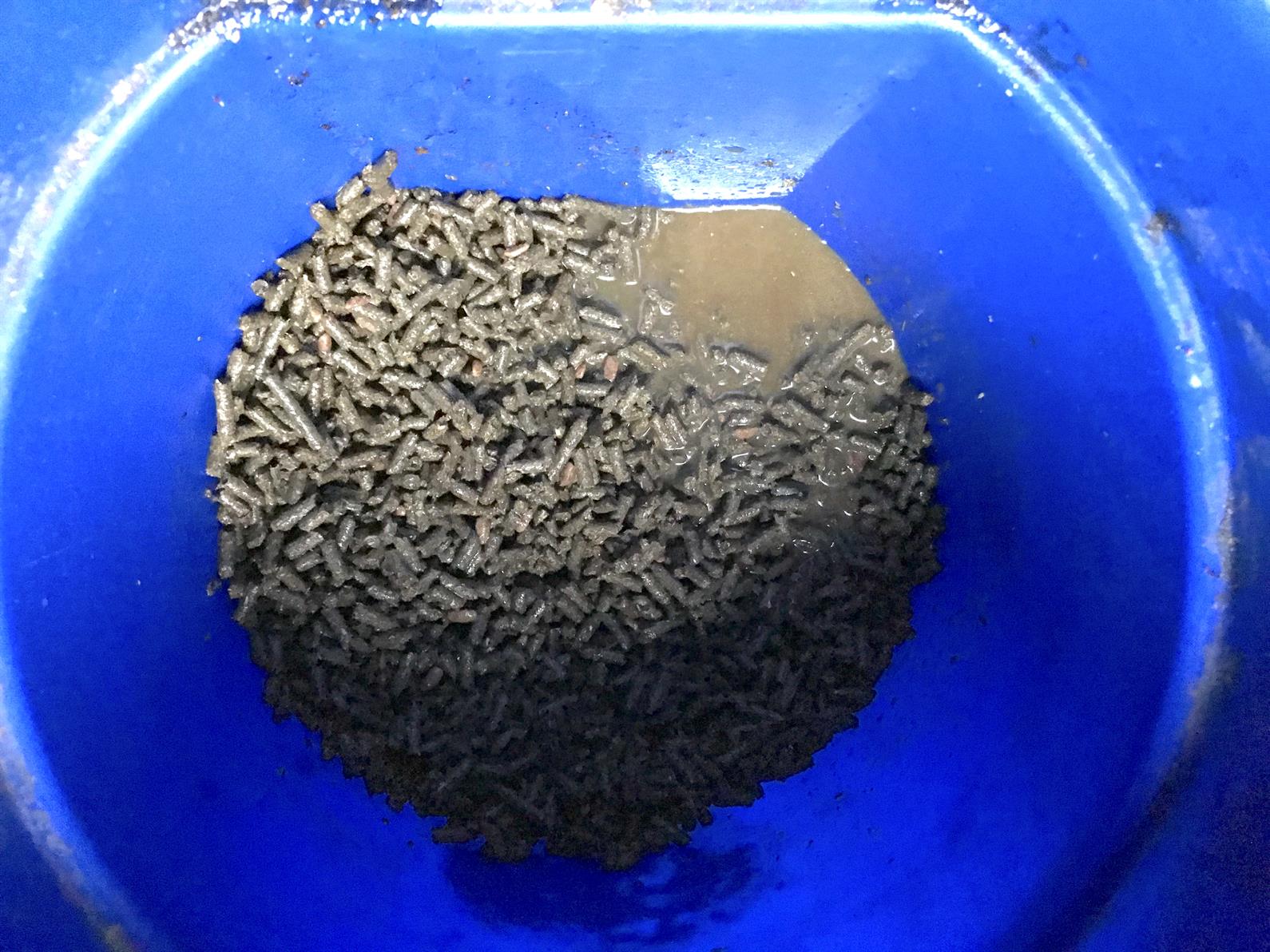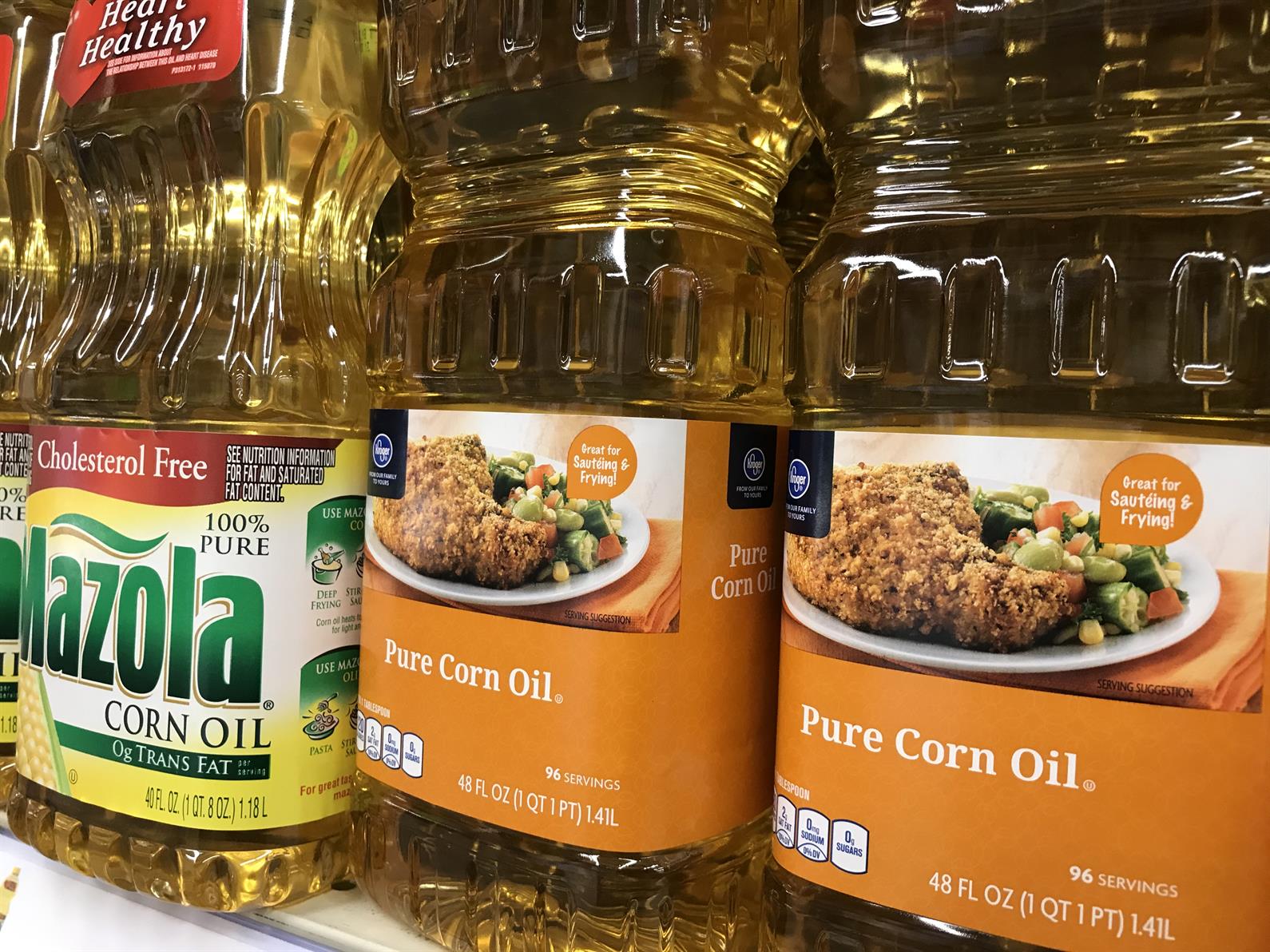Choking—an obstruction in the esophagus, often involving food—can affect horses of any age or type. And it can be serious: a bad choke can cause potentially life-threatening secondary lung infection and can injure the esophagus.

Fortunately, there are things you can do to help prevent it in your horse or pony—and there are actions you can take during a choking episode, starting with an immediate call to your vet.
“All horses can be at risk,” said Dr. Luke Fallon of Hagyard Equine Medical Institute in Lexington, Ky. “Don’t mess around with a choke. It’s not something to sit on.”
Signs of Choking
Symptoms can vary, but signs of choke can include
- An appearance of distress or discomfort. “A lot of times they’ll be in obvious distress and have an increased respiratory rate,” Fallon said. They might lie down (or try to lie down).
- Unusual or lower head carriage. “They’ll often hang their heads low, and they often will seem to be straining along the strap muscles in the neck,” said Fallon. “They might also flex their necks and tense up the strap muscles, and they might show signs that they’re having difficulty swallowing. Those can be early indicators.”
The low head carriage is helpful, because it can help the horse clear the obstruction and reduce the chances he will aspirate material into his lungs, which can lead to pneumonia or other secondary infections. Fallon recommends letting the horse keep his head low; don’t tie the horse or elevate his head in hopes that the blockage will go down on its own.
- Nasal and/or oral discharge. Many horses will drool from their mouths during a choking episode. “In more advanced or pronounced cases, they’ll have nasal discharge,” Fallon said. “Your worry is that they will aspirate [inhale material, such as food particles and saliva, into the lungs]. You should always assume that a horse that has been choking for any period of time and has nasal discharge could have complications from aspiration, such as respiratory infections like pneumonia.”
- Coughing or gurgling noises. “Odd oral noises, like a gurgling or growling sound, can be related to their trying to get that bolus of food to go one way or the other,” Fallon said.
- A visible obstruction along the neck. “Sometimes you can see the bolus of food along the neck and along the jugular groove,” said Fallon. “The esophagus is typically on the left side of the horse’s neck, although occasionally it will be translocated to the right side, but a lot of times if you watch your horse swallow normally when he eats, you’ll see that bolus migrate down the neck.”

In cases where the bolus is obvious, Fallon said he sometime suggests that the owner sedate the horse, apply a warm towel over the visible obstruction, and gently massage the area in attempt to break up the bolus. “But call your vet first,” he said. “You want to have a vet on the way.”
Your vet is likely to sedate the horse with acepromazine and/or an anti-spasmodic like hyoscine butylbromide (which can help relax the neck, lower the head to keep discharge flowing away from the lungs, and end spasms in the esophagus). Treatment can involve passing warm water through a nasogastric tube to try to gently flush the obstruction down into the stomach.
“A horse will have a propensity to repeat choking,” Fallon cautioned. That’s particularly true if the initial choke was severe or lasted a long time, which increases the potential for damage to the esophagus.
“Keep your eye on that horse,” Fallon said. “And identify predisposing causes to try to prevent it from happening the first time.”
Risk Factors
There are a number things to consider when assessing your horse’s choke risk, including
- Eating dry food
Depending on your horse’s location, the amount of dry food he eats can increase during the winter, when he might
have less access to pastures with grass, which can provide a lot of moisture as he eats. “When they’re foraging on more dry matter and possibly not drinking as much, as they often are in many areas during the winter, we tend to see more chokes,” said Fallon.
- Not drinking enough
This, too, can be more of a problem in the winter. “If you can, always keep a source of warm water to offer them,” Fallon said. “Horses on pasture don’t have to drink as much during the warm months, because they’re getting a lot of moisture out of that forage. But during the winter, you eliminate that. They’re often grazing on dry pasture and eating dry hay, and your feeding them sweet feed that has a modest moisture content. And in the winter, with the lower humidity, they’re losing even more moisture through their respiration. The only straight water intake is what they drink.
“If you can feed them inside, you also can offer them electrolytes, which makes some horses want to drink more,” Fallon added. “I’ve had people put Gatorade or even Kool-Aid to get them to drink.”
- Dental and age-related issues
Older horses often develop teeth issues that can contribute to choke, but young horses, too, can have problem teeth. “It can be a yearling that’s growing quickly and has sharp molars or who has a lot of competition for feed and bolts his food,” explained Fallon. “It can be a three-year-old who has caps on his premolars that need to be removed and is having trouble chewing his food completely.”
Also at higher risk of choking: weanlings whose diets are changing from milk they nurse to hard food or pasture grass that they eat. “If they’re kept in a group, they’re not only competing for their feed, but they might be nervous, and they’re also going from nursing somewhat to all hard feed,” Fallon explained. “They have less moisture intake in their diet, and they tend to gorge.”

In the older horse, missing or badly worn teeth are among the issues that can lead to poor chewing and choke. And a horse whose bite has changed, whether through tooth loss or through jaw or esophagus injury, can also be at increased risk for choke.
Fallon recommends having your vet check your horse’s teeth every six months from his yearling to his sixth year. “For older horses, an annual dental exam should be sufficient, unless the horse has an issue, like missing teeth or some alteration in its bite,” he said.
- A prior case of choke
A long-lasting choke episode can injure the esophagus and cause scarring that might narrow or change the esophagus, predisposing a horse to choking again.
Feed to Prevent Choke
There are a number of management techniques that can reduce a horse’s risk of choking, starting with the moisture level of your feed.
“A lot of it can be predicated on what they’re being fed,” Fallon said of choke risk. “If you’re feeding dry or dehydrated matter—like alfalfa cubes or beet pulp, for example—be aware that you’ll want to soak or saturate it. But I’ve known horses to choke on hay and regular old sweet feed, too. It doesn’t have to be dehydrated or desiccated feed matter to cause choking.”
1. Add water
Turning your horse’s nightly ration of grain or pellets into a soupier mixture can help deliver moisture and make his meal go down more easily. If you go that route, let the water-and-feed mix soak long enough to allow the feed, pellets, or cubes to expand before you feed them, Fallon cautioned.
2. Add oil
“If you’re feeding sweet feed and your horse has a propensity to want to gorge on it, especially if he won’t eat it with water in it, try adding some oil, like corn or rice bran oil,” Fallon suggested. Check with your vet to determine how much your horse should receive.
3. Slow them down

Adding water also can slow a horse’s eating down, another positive for choke-prevention.
“Some horses, like some people and dogs and other animals, might tend to bolt their food. They’ll just try to eat it in one big gulp,” said Fallon. “They’re obviously more prone to choking because of that.”
If you have a horse or pony that wants to eat at record speed, there are ways to slow him down.
“I’ve had clients who have put blocks or rocks of salt or even a large stone in the feed tubs to make the horses navigate around them,” said Fallon. If a softball-sized salt rock or stone doesn’t work, there are also “slow feeder” tubs on the market that are designed to prevent horses from bolting their feed; ask your vet or feed supplier about these.
4. Smaller portions, more often
“Rather than having one or two large feedings a day, especially for horses that are up most of the time and might have the propensity to want to gorge themselves, try feeding smaller amounts more frequently might help avoid choking,” explained Fallon. A potential bonus: there’s evidence, including this recent practical study led by Hagyard’s Dr. Nathan Slovis, that feeding smaller amounts more often throughout the day can help prevent gastric ulcers in horses, too.
Want articles like this delivered to your inbox every week? Sign up to receive the Equestrian Weekly newsletter here.
This article is original content produced by US Equestrian and may only be shared via social media. It is not to be repurposed or used on any other website than USequestrian.org.


